Hyles euphorbiarum
(Guerin-Meneville & Percheron, 1835)
Sphinx
Hyles euphorbiarum female, Los Altos, Rio Ceballos, Cordoba, Argentina,
November 26, 2007, courtesy of Nigel Venters
|
|
Updated as per http://www.pybio.org/SPHINGINAE.htm (Paraguay), October 2007 Updated as per personal communication with Nigel Venters, December 2007, July 2008 Updated as per personal communication with Joanna Rodriguez Ramirez (San Juan; Argentina), January 21, 2015 Updated as per personal communication with Ezequiel Bustos (Shilap revta. lepid. 43 (172) diciembre, 2015, 615-631 eISSN 2340-4078 ISSN 0300-5267), January 4, 2016 Updated as per personal communication with Francierlem Oliveira, Taboleiro Grande and Extremoz, Rio Grande do Norte, Brazil; March 16, 2020 Updated as per personal communication with Anna & Frank West, Camacan, Bahia, Brasil; April 26, 2022 |
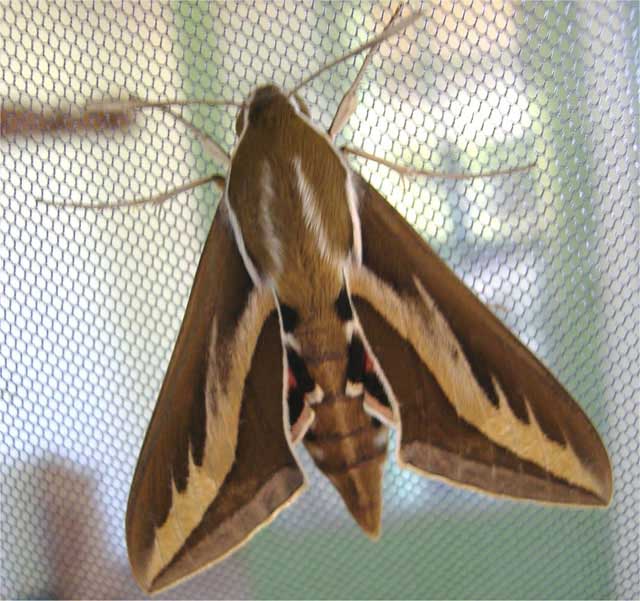
Hyles euphorbiarum female, Los Altos, Rio Ceballos, Cordoba, Argentina,
November 26, 2007, courtesy of Nigel Venters
TAXONOMY:
Family: Sphingidae, Latreille, 1802 |
The specimen type locale is unknown.
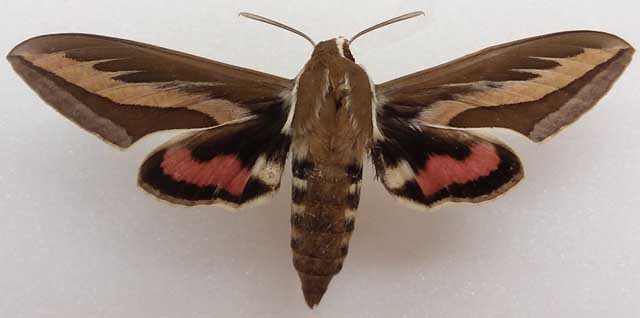
Hyles euphorbiarum, 78mm, Instituto Uiracu, Camacan, Bahia, Brasil,
September, 2011, 800m, courtesy of Anna & Frank West
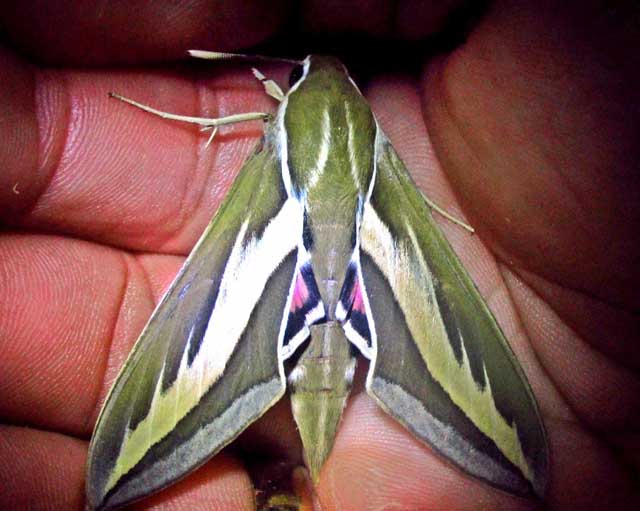
Hyles euphorbiarum, Taboleiro Grande, Rio Grande do Norte, Brazil,
April 16, 2020, courtesy of Francierlem Oliveira.
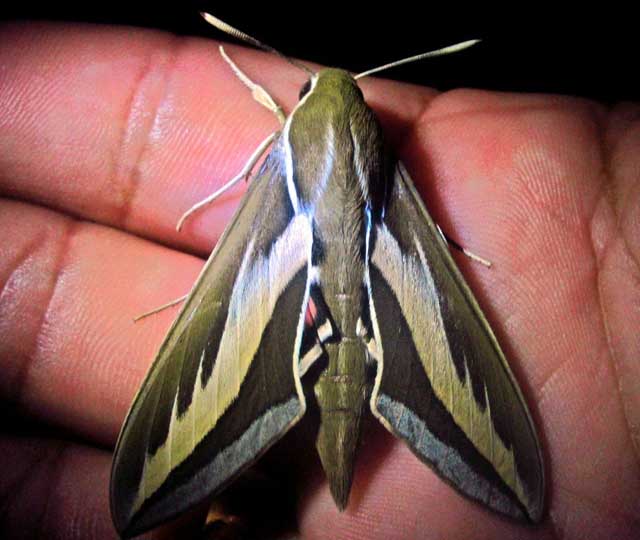
Hyles euphorbiarum, Taboleiro Grande, Rio Grande do Norte, Brazil,
April 16, 2020, courtesy of Francierlem Oliveira.
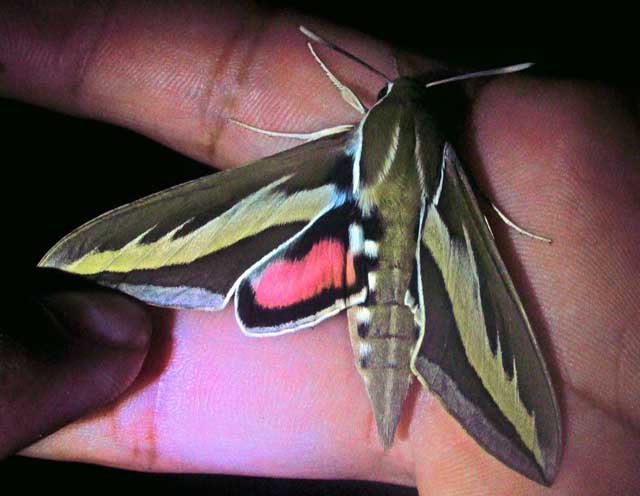
Hyles euphorbiarum, Taboleiro Grande, Rio Grande do Norte, Brazil,
April 16, 2020, courtesy of Francierlem Oliveira.
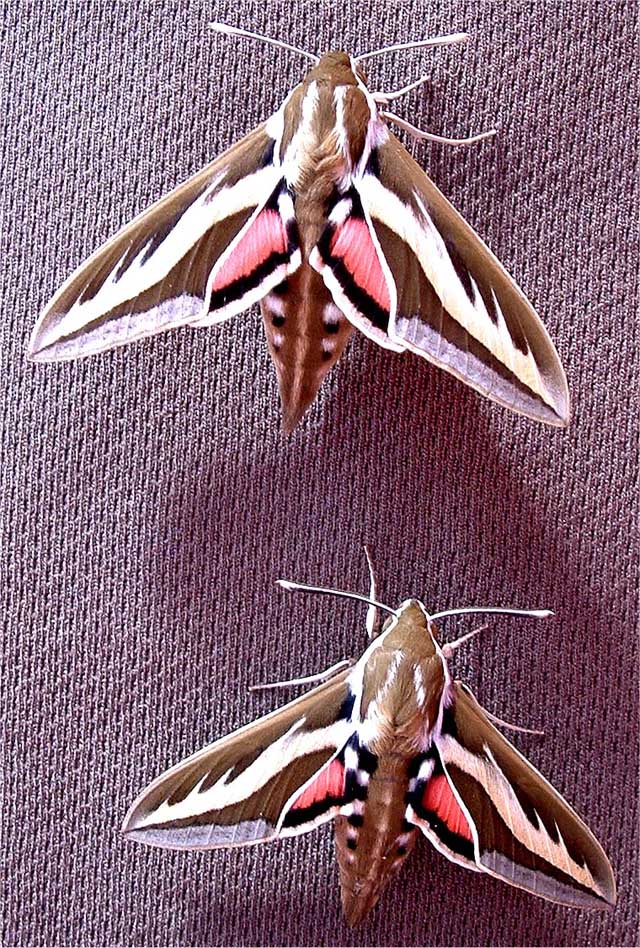
Hyles euphorbiarum, male and female, courtesy of Nigel Venters.
Jean Haxaire writes, "Host plants: Vitaceae. Reared in France on Vitis vinifera."
Nigel Venters indicates the female, depicted at the top of the page, deposited a total of 859 eggs between 26th of Nov to 10th December.
Nigel writes, "It was (in my view) not at all common, as I ran a Mercury vapour light every night for a month and this was the only specimen I saw. (plenty of other species though!).
"Contrary to its name, it does not take Euphorbia as a hostplant. I tried many different species of hostplant and finally got the larvae to feed on Fuchsia.
"The first instar larvae are bright green, and so far (I only have them into the second instar) the 2nd instar larvae are black with very small yellow markings, which I guess will become more apparent as time passes. As for flight period, I would suggest November to March as the flight period, (looking at records at the local museum in Cordoba)."
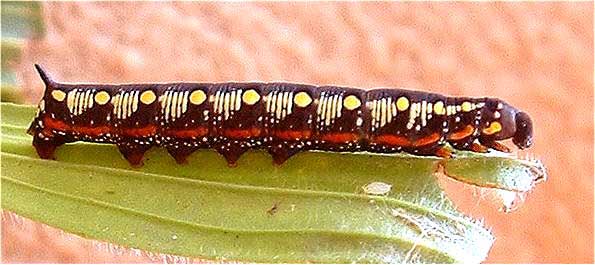
Hyles euphorbiarum third instar, courtesy of Nigel Venters.
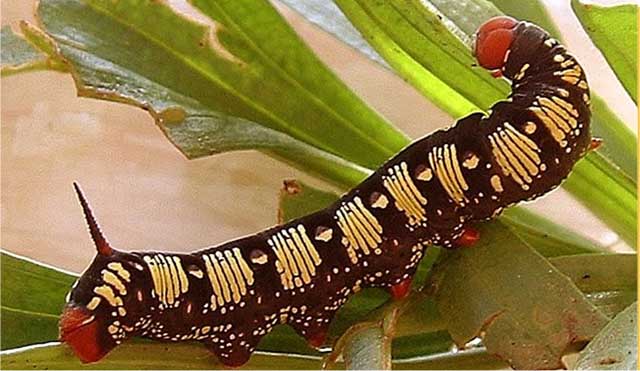
Hyles euphorbiarum fourth instar, courtesy of Nigel Venters.
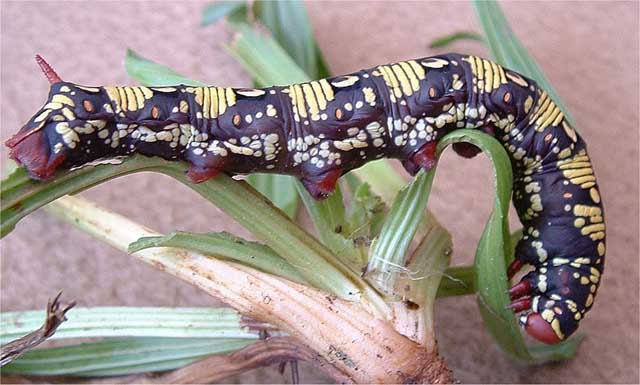
Hyles euphorbiarum fifth instar, courtesy of Nigel Venters.
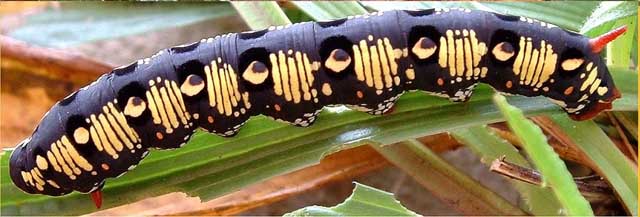
Hyles euphorbiarum fifth instar, courtesy of Nigel Venters.
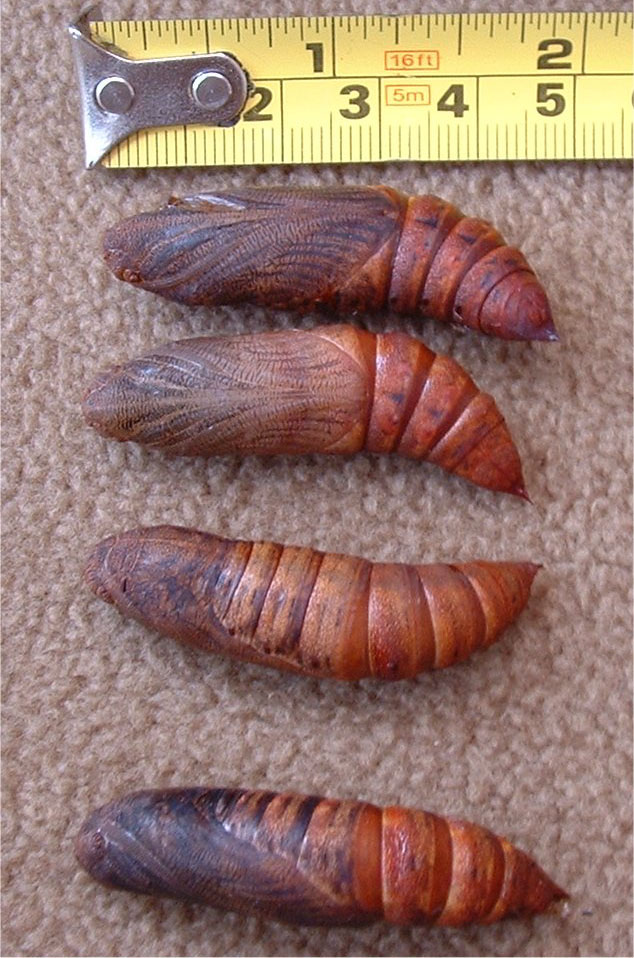
Hyles euphorbiarum pupae, courtesy of Nigel Venters.
Visit Force Feeding explanation/images, courtesy of Nigel Venters.
Here is the data for laying:
26/11/07 (I ova)
27/11/07 (7 ova)
28/11/07 (29 ova)
29/11/07 (46 ova)
30/11/07 (135 ova)
01/12/07 (52 ova)
02/12/07 (32 ova)
03/12/07 (44 ova)
04/12/07 (37 ova)
05/12/07 (78 ova)
06/12/07 (215 ova)
07/12/07 (112 ova)
08/12/07 (52 ova)
09/12/07 (11 ova)
10/12/07
I let the female go, she was still alive and although tattered, quite healthy! A total of 869 ova.
Use your browser "Back" button to return to the previous page.
Goto Main Sphingidae Index
Goto Macroglossini Tribe
Goto Central American Indices
Goto Carribean Islands
Goto South American Indices
Goto U.S.A. tables